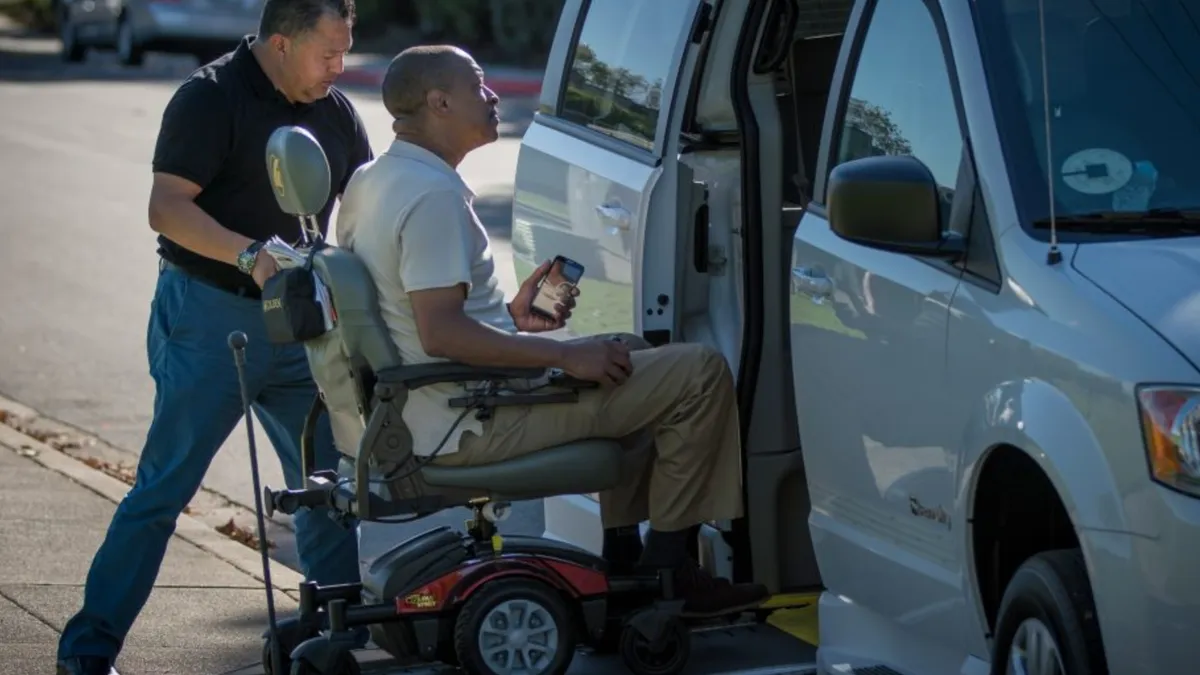Dive Brief:
- Uber announced a partnership with third-party transportation provider MV Transportation to increase access to wheelchair accessible vehicles (WAVs) in six cities: New York City, Boston, Philadelphia, Chicago, Toronto and Washington, DC. The goal is to drop average wait times for WAVs to 15 minutes or less in those cities.
- Uber said it aims to get similar wait times for WAVs in San Francisco and Los Angeles over the next year; collectively, those eight cities account for half of all Uber trips in North America. More cities will be added in the future.
- MV Transportation serves more than 110 million seniors and passengers with disabilities a year in 30 states and Canada. MV will continue to own and operate all WAVs added to the Uber platform, and Uber will invest to keep WAV trips priced similarly to an UberX trip.
Dive Insight:
Even though the company has had a well-publicized partnership with the City of Boston on a paratransit pilot, Uber has drawn significant heat for not providing enough service to wheelchair users and people with disabilities, with legal challenges in at least four cities. The Equal Rights Center sued Uber last year for not offering equal UberX service to wheelchair users (passengers were instead directed to a limited number of accessible taxis). A separate challenge filed by Disability Rights Advocates in February charged that Uber had failed to provide wheelchair-accessible service in the San Francisco Bay Area, with a WAV unavailable 80% of the time.
In a report released this spring by New York Lawyers for the Public Interest, the group only found a WAV in three out of 65 attempts to hail one on Lyft and 27 of 49 attempts with Uber, for a combined success rate of just 26%.
Cities have tried to figure out how services like Uber and Lyft fit into existing mandates for accessible vehicles. New York City, for example, passed a rule mandating that 25% of rides by 2023 be in wheelchair accessible vehicles; through a settlement with Uber and Lyft, an option was added to reduce wait times for WAVs to 10 minutes or less in 80% of rides.
The main problem has been one of supply — even after Uber made WAVs a searchable option on its platform, there were limited options, many of them private taxis. The partnership with MV Transportation will bring experienced drivers and vehicles into the fold, and should dramatically increase the supply in the six initial launch cities while keeping prices competitive with other Uber rides.
The fact that the partnership is only launching in six cities and eight by next year could blunt its impact, especially since accessibility remains a larger concern in more suburban or rural environments. Uber CEO Dara Khosrowshahi acknowledged in a blog post “there is still a long way to go — and that we’re at the beginning, not the end, of this journey.











